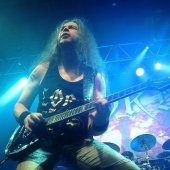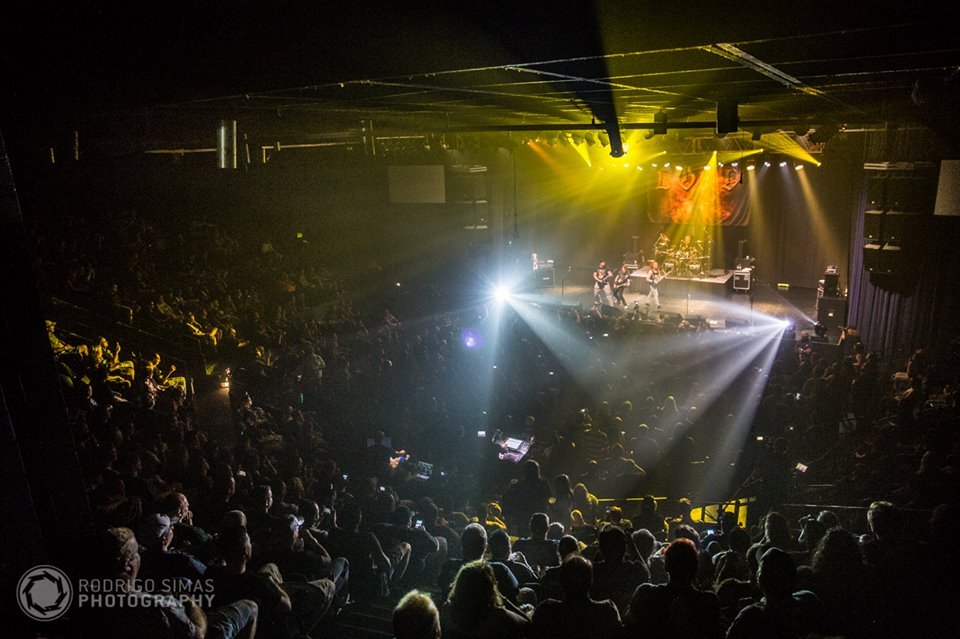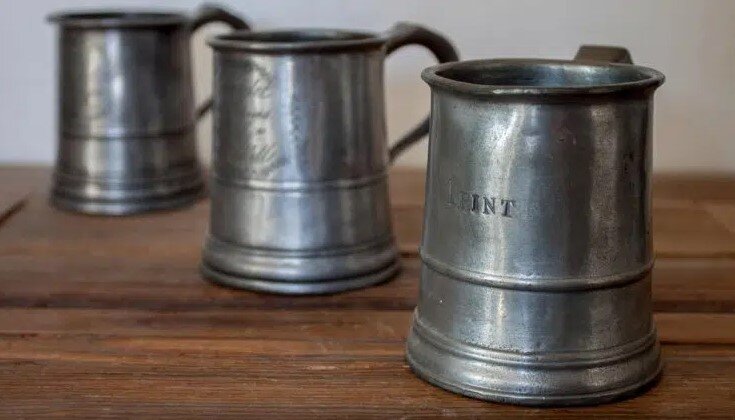-
Posts
2,816 -
Joined
-
Last visited
-
Days Won
8
Everything posted by Lord Tim
-
Ha, snuck in during my reply! Yeah, what he said!
-
Try this: Open both projects in CbB. Switch to the source project. On your source project, select all of the tracks you want to copy to the new project, right click one of their track headers and save this as a Track Template. (Use a temporary name if you like, you can delete this template later) Switch to your new project. Right click anywhere in a blank spot of the track pane and choose Insert Track Template, and it'll recreate all of your tracks and busses with all effects intact. Switch back to your source project and select the tracks again, copy them. Switch to your new project, and paste that into the identical tracks. That should get you where you want to be! Full info about Track Templates is here: https://www.cakewalk.com/Documentation?product=Cakewalk&language=4&help=Arranging.18.html
-
First of all, don't use ASIO4ALL. This interface comes with ASIO drivers which are the correct and best ones to use. ASIO4ALL is kind of a stop-gap wrapper for devices that don't have proper ASIO drivers, and not a great one at that. The rule is, if there's a native ASIO driver, always choose that first*. Exit out of Cakewalk, then go and uninstall ASIO4ALL. Make sure your 22VSL is unplugged. Go here and download the Universal Control app: https://www.presonus.com/products/AudioBox-22VSL/downloads Install that, then plug your 22VSL in, and it should detect OK and make the driver available. Start Cakewalk, and go to Preferences > Playback and Recording and make sure Audio / Driver Mode is set to ASIO, then go to Audio / Devices and put ticks in the boxes for your 22VSL. There's a good chance this will already just be set up and ready to go, but it's worth checking this stuff. Exit out of Preferences and you should be good to go. EDIT: * The one exception to the "always choose ASIO first" rule is if you're using an onboard Realtek sound interface. The ASIO driver for that is utter garbage, and people should use WASAPI for that. But for any good audio interfaces, such as the 22VSL, ASIO is definitely the best thing to use.
-
Scroll down to the "Improved plug-in exception handling / crash reporting" section of this page and set the severity to 7: http://www.cakewalk.com/Documentation?product=Cakewalk&language=3&help=NewFeatures.026.html This may actually be crashing silently, and this might force it to show the error and give us a clue what's going on.
-
Another stat to consider is the expected lifespan of a typical HDD is around 3 - 5 years on average, vs the 980 pro which is somewhere between 5 to 10 years if you really hammer it with many tens of GB each day. Looking at the stats, even in a commercial studio like I run, that's still a pretty hefty amount of work for a dedicated audio drive (I still recommend separate drives for your system, audio data and any sample sets just to spread the writes out, even though a single drive would easily be enough for most people speed-wise). Erik is right, when your SSD dies, it goes away - see ya, data - whereas a HDD will usually give you clues that it's failing. But that said, I've lost a lot of HDDs over the years, and some almost overnight, but I've never actually lost a SSD, and the 980 pro is a damn good quality one. But nothing is perfect - everything will eventually fail sooner or later. Like it says above, backup, backup, backup!
-
You won't lose quality with any kind of drive you record to - internal, external, HDD, SSD, SATA, NVMe, USB... data is data. However, you'll have substantially less speed recording to an external drive, which will mean far fewer tracks that can be streamed at once, and a much better chance of clicks and pops. Your NVMe drive is absolutely the best choice to record to. That said, it's a really good idea to back that recording up to an external drive regularly. All drives fail eventually, so regular backups can sometimes be a life-saver.
-

Huge problem with the Tempo Map and audio following tempo changes
Lord Tim replied to Olaf's topic in Cakewalk by BandLab
That's generally what I do too, although some ideas are audio and need slicing or stretching. It'll be interesting to see what Noel and the team make of this once they're back from their break! -

Huge problem with the Tempo Map and audio following tempo changes
Lord Tim replied to Olaf's topic in Cakewalk by BandLab
That's happened to me on occasions too. I solved that by uploading to somewhere like Imagur or Giphy and copying in the embedding link - that usually does the trick. -

Huge problem with the Tempo Map and audio following tempo changes
Lord Tim replied to Olaf's topic in Cakewalk by BandLab
Ultimately, CbB may *not* be the tool for how you like to work at the end of the day - it's not out of the question to do one process in one DAW and then move to another for something else. In this case, you could sketch out your tempo/meter map elsewhere, once you're ready to track properly you would export a MIDI file with the tempo info in it, open in CbB and do your tracking in a fast and familiar environment. You wouldn't run into any of these issues because the timing changes would already be locked in before you added any audio. From what I gather, the timebase that everything works to goes back to how it was originally implemented in the old Twelvetone days and has been enhanced over the years since (Bakers, please tell me to stop talking now if I'm way off base!) so there may be limitations with how tempo works with certain operations currently. It'd be good to know either way what's going on. That being said, I've personally never run into this kind of problem because my workflow is quite different, despite doing music that can get fairly complex with tempo and meter changes, so how you're using it may shed some light on something that needs to be looked at. -

Huge problem with the Tempo Map and audio following tempo changes
Lord Tim replied to Olaf's topic in Cakewalk by BandLab
Just FYI, those are .webp files which basically are a Google replacement for JPG. Unfortunately the forum software here doesn't recognise them as an image format. So they're safe to view, in case anyone was wondering and wanted to help. @Olaf - it might be more accessible to people here to transcode them over to JPG or animated GIF to make them easier to check out. There's obviously big issues with how you're using CbB that looks like it's uncovering some pretty big limitations, so it'd be good to narrow that down to see if it's actually a CbB thing or local to your machine environment. It's always good to at least get issues onto The Bakers' radar, if not fixed right away. -
Check your Workspace - some of the basic ones hide parts of the UI and menus. If you switch to Advanced you should see everything. http://www.cakewalk.com/Documentation?product=Cakewalk&language=3&help=Lenses.1.html
-
Try Licecap: https://www.cockos.com/licecap/
-
The biggest problem with what the OP was suggesting was there's a LOT of the UI that can be folded away and hidden until you need it that takes up FAR more screen real estate than what he was suggesting losing, plus the things he suggested cutting out are kind of important for actually making the program work. If you remove the scrollbars, for example, how do you navigate around your project? A lot of the menus that he was suggesting should be cut out are project specific rather than global menus, so it'd force you to remember a bunch of key commands, and you'd have no visual indicator that something was active or not (anyone who uses Ripple Edit a lot will know what a good day it was when we got the indicator icon). You lose core functionality to save a tiny amount of space. This isn't Cakewalk bias, as much as we're obviously here because this is our DAW of choice and are comfortable with the workflow, there's some very logical reasons that some of this stuff is actually in there and can't be removed. Like I said, you could get rid of 30 or 40 pixels worth of borders, scrollbars and menus... or... you could fold away great chunks of the UI and get far more screen real estate back just by taking advantage of how Skylight is designed. Example: Here's my full layout: Versus my compact layout for a single, low res panel: I'm saving FAR more space folding away the panels I don't use than I would do by hiding a few menu and scroll bars,
-
Press the Scroll Lock key.
-
Yeah this happens to me too. I think it's a permissions/certificate thing. I definitely agree, it's been great that the legacy site has been up there for so long to ease the transition - that was a good decision - but I reckon it's probably starting to hurt as much as it's been helpful at this point. I'm sure it's on the to-do list, but there's a LOT of stuff up on there - it'd be a pretty huge job, and just trashing it and starting over would lose a heap of valuable info, so it'd need to be migrated carefully.
-
Your best bet is to use the Skylight interface the way it was designed. D shows/hides the Multidock. I shows/hides the Inspector. B shows/hides the Browser, C shows/hides the Control Bar (or Shift+C minimises it). Or you can set a Screenset or Workspace to do that all with a single keystroke. In the studio, I'm running a 5120x1440 main panel with a 1920x1080 secondary screen, so I have real estate to burn - I'm happy to have everything in front of me, spaced nicely so it doesn't feel crowded. When I'm out on the road and just using a single laptop display panel, I change to a more compact Workspace and show only the elements I care about when I'm doing the required task.
-
-
That's crazy! You were obviously needing help. Although big props for rising above it and managing to record on your toaster for the last few years while you waited for proper advice! (They give you warm mixes but far too many pop-ups IMO)
-
I have some big orchestral / full live kit templates that can get into the hundreds, especially once you get into doing redundant DI tracks for guitars, Aux tracks for routing, etc. Having said that, that's hell to wrangle - I've tended to split those big templates into more modular templates I can add at will when necessary.
-
So.... did you eventually figure out how to turn on the computer? ?
-
That's a good point too - if you started any projects earlier than some of the recent releases, the algorithm won't change over to the new Multi-Resolution one automatically, you need to change that yourself. But that said, as much as I find this algorithm by far the best one yet for how I work, it's definitely worth exploring all of them just to see if you get any better results.
-
The other option is to load the clip into Melodyne and do any timing corrections in there, since it has different detection methods. The new detection algorithm in AudioSnap is definitely much better than it was but there's most definitely room for tweaking, or other algorithms specifically for problem instruments. It's looking like the focus at the moment is on the most requested big stuff that will benefit most of the user base (arranger tracks, articulation tracks, improved exports, etc etc) rather than more niche things like AudioSnap - as much as that's a pet area of mine that I'd love to see get a new revision, which makes a lot of sense - but fingers crossed it gets a revisit soon.
-
It's obviously not a widespread thing or the forums would be on fire right now, so it's unlikely popped up on their radar, but you're right - this doesn't sound like a simple plugin issue at this point. Everyone's a bit quiet at the moment and that usually means they have their head down working on something, but it won't be long until someone sticks their head in now what Mark has replied I'd say.







